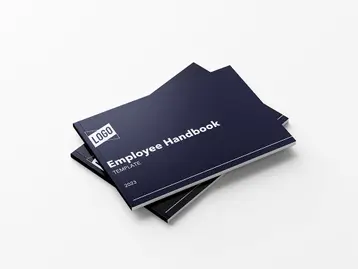
Employee leave of absence (LOA) is always a timely topic for human resources (HR) professionals. It's one of those topics that can be addressed with the help of payroll software, but it also requires an understanding of the legal requirements. Keeping track of all these types of leaves, as well as knowing what is required of you, can be a daunting task, which is why we've put together a comprehensive guide to employee leave. We’ve categorized the leaves by mandatory and voluntary, and included some helpful resources to help you understand which type of leave of absence applies to you. Have a minute? Learn how online time tracking software can save you countless hours.
Federally Mandated Leave of Absence
Family Medical Leave Act (FMLA)
FMLA gives employees 12-weeks of unpaid, job-protected leave due to a number of specific family and medical reasons, including, but not limited to:
- Birth of a child, or to care for a newborn child within one year of birth
- Adopting or fostering a child within the first year
- A health condition that prohibits the employee from doing their job
- Care for a spouse, child, or parent who has a serious health condition
- for a covered employer (private employers with at least 50 employees)
- for the employer for at least 12 months
- at least 1250 hours with that employer
- at a location where the employer has at least 50 employees within 75 miles of the worksite
We’ve got a number of FMLA guides for you to leaf through, including: info on the FMLA timeline and how to know if your company is required to comply with FMLA.
Military Family Leave
Technically, Military Family Leave falls under the Family and Medical Leave Act and guarantees service member and their families two major forms of leave:
- Military Caregiver Leave: If your employee is the spouse, parent, child, or next-of-kin of a service member who’s been injured or is ill, they can take up to 26 weeks of unpaid leave to take care of their military relative.
- Qualifying Exigency Leave: Having a deployed loved one brings with it a number of important issues. Qualifying Exigency Leave allows a spouse, parent, or child of a military member who’s deployed, or given notice of deployment, in a foreign country to take time off of work to deal with these issues.
The Department of Labor (DOL) has put together a complete guide to Military Family Leave, which you can access here.
Jury Duty Leave
The Fair Labor Standards Act (FLSA) doesn’t require employers to pay their employees for time spent fulfilling their civic duty. However, it does protect employees from termination because of their service on a federal jury. Most states also have anti-retaliatory laws concerning jury duty, as well as possible stipends for jurors. New York, for example, requires jurors to be paid $40 per day. The fee is paid by the State or the employer, depending on the day of service and size of employer. New York has put together a flow-chart that spells out who’s responsible for the fee. Depending on your state, you can even require employees to provide proof of their service. This list of state specific jury laws can help you determine what, if any, jury duty you have.
USERRA: Military Service Leave
The Uniformed Services Employment and Reemployment Rights Act (USERRA), among other things, protects the jobs of military service members who leave work in order to perform their military duties. Generally, an individual may be absent from work for military duty for up to five years, and retain their right to reemployment.
State-Specific Leave of Absence
Victim Leave
Many states require employers to offer Crime Victim Leave. The leave is designed to protect employees’ jobs when they have to attend judicial proceedings related to a crime. The majority of states also have their own leave laws specifically for victims of domestic or sexual violence, most of which allow employees time off work to address the violence, as well as protection then from termination due to the violence. Check to see if your state has its own victim leave.
Voting Leave
As 2016 approaches, it’s important that your employees are ready for election day. In order for employees to vote early and often, many states have enacted laws that require employers to offer voting leave. For example:
- Alabama law specifies that employees can have up to one hour to vote and that the employer can determine when that hour can be taken. The time off isn’t paid.
- California law allows up to 2 hours at the beginning or end of shift (whichever gives the employee the most time to vote and the least time off work). The time off is paid, though the employee must request the time off two working days before the election.
Check out this guide to state voting leave laws.
Other State Leaves
Listing each state’s leave of absence laws would be a daunting task–California, for example, has regulations for School Appearance and Activities Leave, Organ and Bone Marrow Donor Leave, and Volunteer Civil Service Leave, to name a few. Be sure to check with your state’s labor laws to determine if there are any state leave laws you need to keep on your radar.
Voluntary Leave of Absence
Though mandatory leave is determined at the federal or state level, voluntary leave is, for the most part, up to you to offer. We’ve listed a number of the typical forms of leave that companies provide their employees, as well as any state laws that might impact these leaves:
Parental Leave
As of 2017, only 15% of U.S. workers have access to paid family leave through their employers. Despite the many advantages to offering such a benefit, as we discussed in a recent blog post, the U.S. continues to be one of the few advanced countries that doesn’t require such a benefit. Though there aren’t any federal laws mandating employers pay for parental leave, the FMLA does apply. New parents can get 12-weeks of time off to spend with their new bundles of joy, though the time would be unpaid.
Maternity Leave
Currently, 18 states, plus D.C. and Puerto Rico, have maternity leave laws, many of which are more rigorous than FMLA. For example, if you’re a California employer with at least five employees, you’re required to offer your pregnant employees up to four months of leave. Check out if your state has any maternity provisions here.
Paternity Leave
While new fathers are eligible for unpaid time off under FMLA, some more progressive companies are choosing to offer paid leave: Facebook, for example, offers four months, while Yahoo offers eight weeks. When the laws collide: if an employer offers paid maternity leave to their female employees, they must do the same for their male employees. If you don’t, such a distinction would be considered discriminatory. However, if the maternity leave is specifically for the birth of the child, or any physical issues related to the pregnancy, then the leave can be offered to females alone.Vacation Leave
Once again the U.S. stands apart from the rest of the world by being the only advanced economy that doesn’t require paid vacation time. Certain states do, however, have laws regulating paid vacation days, if employers offer them. For example, if you’re a California employer who offers paid vacation days, those days are treated as wages and as such cannot be taken away without compensation. Not sure if your state has paid vacation regulation? Check out this helpful guide. Vacation days are sometimes lumped with sick leave into the category Paid Time Off (PTO). If you’re stressing about managing PTO, we’ve got some tips to help you out.
Paid Sick Leave
Though flu season is upon us, there’s no federal law requiring paid sick leave for your coughing coworkers. California is an exception to this lack of leave law. As of January 1, 2015 the state has enacted a new sick leave law that allows qualified employees to accrue sick leave days. On September 7, 2015, President Obama, by executive order, established paid sick leave for federal contractors as well. Paid sick leave policies are the next big thing for the benefits scene. We think you should consider such a policy, or at least take steps to prevent the flu from sweeping through your workforce.
Funeral/Bereavement Leave
In October 2014, Oregon became the first state to require certain private employers to provide bereavement leave to qualified employees. Most companies include some form of bereavement leave in their company policy. If you’re looking for some guidance as to such a policy, as well as communicating the policy to your employees, we've put together a quick guide for just that. We’ve also put together a guide for determining compensation for bereavement leave.
Holidays and Religious Observances Leave
If you have 15 or more employees, you must comply with Title VII of the Civil Rights Act of 1964, which, among other things, requires that you make reasonable accommodations for employees’ religious observances. This can include, for instance, if an employee has used up all of their paid time off, they can be allowed to take a day off for their religious observance without pay.
Other Leave of Absence Options
If you’re so inclined, you can offer a variety of additional leave of absence options to your employees. Personal and educational are major types of leave that fall under the ‘Other’ category. Usually unpaid, these types of leave allow employees the flexibility of maintaining their jobs while pursuing other interests. It may feel like there are more types of employee leave than there are leaves on a tree (or in your gutters, depending on the time of year). Depending on your state and company size, you might have a number of mandatory leaves on your hands, not to mention specific company policies too. Keeping track of all of these leaves can feel overwhelming, though it doesn’t have to be. *This post was originally published on November 10th, 2015.
This communication is for informational purposes only; it is not legal, tax or accounting advice; and is not an offer to sell, buy or procure insurance.
This post may contain hyperlinks to websites operated by parties other than TriNet. Such hyperlinks are provided for reference only. TriNet does not control such web sites and is not responsible for their content. Inclusion of such hyperlinks on TriNet.com does not necessarily imply any endorsement of the material on such websites or association with their operators.






